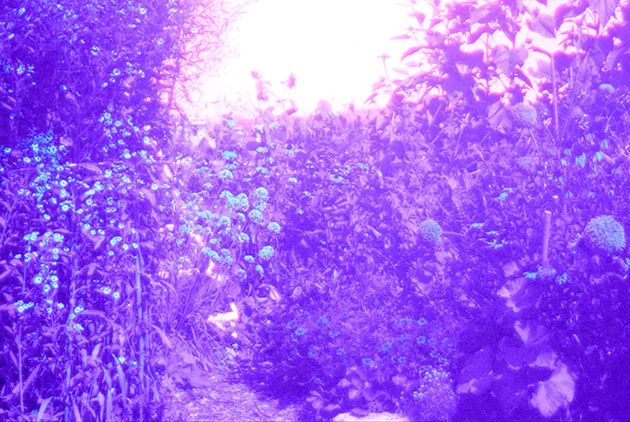“The greatest scientists are always artists as well.” -Albert Einstein
The view that the arts and the sciences are two completely separate, even opposing, spheres is as old as is it is inaccurate. The Oregon State University Art-Science Fellowship was created to push back against this misconception and help students discover and explore the distinctive intersection of the arts and sciences. Each undergraduate fellow receives financial support to explore creative projects informed by active field research.
This year, four honors students were among the participants in the program: Svea Bruslind, a fourth-year zoology major with a minor in photography; Grace Holmes, a fourth-year environmental science major; Liana Kruger-Moore, a fourth-year animal science major with minors in music performance and chemistry; and Olivia Queisser, a third-year bioresource research major with a minor in chemistry.
While these students come from a variety of backgrounds and their fellowship projects focused on different scientific and artistic areas, the fellows agree that blending these two seemingly different disciplines helped them better understand and appreciate the world around them. Liana describes the program as “an opportunity for multi-faceted students to bring their two worlds together and share scientific discovery through art that speaks in a different way than a typical research project does.” Svea adds, “The Art-Science Fellowship is an immersive and irreplaceable experience that opened avenues artistically and professionally I did not previously know existed.” The fellowship allowed for a large amount of flexibility within student projects. “Fellows were encouraged to create a completely unique project that could grow and change with time,” explains Liana.
Olivia worked to create a visual representation of data from her honors thesis research. In her project, she used a variety of textile and fiber elements, mainly through weaving, to transform her data. She chose weaving as the primary medium because it felt like a natural bridge between art and science. She came up with the idea after taking Chet Udell’s honors colloquium, Electric Nature and being intrigued by the use of data sonification. Oliva says, “I think art can be really powerful in communicating messages, and I liked the idea of a second way to communicate the data I’m gathering with my thesis.” Olivia received guidance from her mentors, Seri Robinson, an associate professor of anatomy of renewable materials, and Joan Truckenbrod, a local artist with a focus in textiles.

Liana’s project compared soundscapes that illustrate noise pollution’s effect on the natural world from the perspective of wild birds. This idea began as a culmination of Liana’s passion for music and animal sciences. She conducted this research under her mentors, Jamie Cornelius and Dana Reason, assistant professors of integrative biology and music respectively. She says, “As a composer and musician, my art mentor has taught me the ins and outs of sound scaping, as well as how to create a musical composition using my own musical instruments and computer-generated music software. My science mentor is an expert in birds and how they react to changing environments, so she has helped guide my choices in birds to focus on and how to narrow the scope of my project to be more consistent and accurate.” She hopes that her research can help make the average person more aware of their impact on their surroundings.

For Svea’s fellowship, she simulated bee vision using a digital mirrorless camera. Her final project is a collection of garden photos that allow the viewer to “see the world the way bees do.” She emphasizes the importance of bees in the human world, describing them as “our tiny hard-working neighbors” and hopes viewers can better understand the significance of pollinators and plant interactions. Svea completed this work with the support of her mentors, Gail Langellotto, a professor of horticulture, and Jasna Guy, a local artist experienced in mixed media art. She was most surprised by how seamlessly art and science fit together. “When I was younger, I was taught that art and science are separated, almost opposite. Due to this fellowship, I have gained new insight into how deeply connected they are.”

The fellows’ projects are also integrated into their honors thesis projects and highlight the Honors College values of encouraging interdisciplinary research and allowing students to pursue a thesis topic outside of their major. Like Olivia, Svea used her Art-Sci Fellowship project to dig deeper into her thesis material. She found that doing this empowered the artistic potential of her thesis and allowed her to “gain a deeper, more well-rounded understanding of [her] research.” This was in large part due to how the fellowship gave her the freedom to explore the intersections of these fields and develop strong mentor relationships and friendships with other fellows. Liana enjoyed how the two projects complemented each other and gave her additional perspectives, saying, “This project was actually a perfect way to dive further into my honors thesis, as they will share the same topic. Both the honors thesis and the Art-Sci Fellowship allow for complete freedom of creativity, but the Art-Sci Fellowship also provides different resources and opportunities to bring my project to the next level.”
The three highly recommend participating in the program. Svea advises participants in the next cohort to let their personal experience and viewpoint guide them to their topic, believing this self-driven exploration leads to the best communicators and results. Liana suggests, “There’s no wrong way to do a project that you created.” Incoming fellows should start by looking at the bigger picture. Olivia recommends that the next cohort “have fun exploring their projects, because it is an incredible opportunity to connect with new ideas and a unique community.”
Applications for the 2023-2024 Art-Science fellowship are due March 17th. You can find more information here.
By Jax Richards, Student Writer
CATEGORIES: All Stories Experience Features Homefeature Homestories Students
Is it possible to correct the spelling of Jasna Guy’s name? It is misspelled as Jansa, in the article.
We have fixed it, thank you for pointing it out!